Heading to Denmark soon or just want to know more about the country? Check out these 77 fun facts about Denmark!
77 fun facts about Denmark
This post is part of a series of fun facts posts I’m doing for every country I have articles about here on the blog. Given their nature, these posts are research-based and even though a lot of time has gone into them, it’s still possible a mistake has snuck in. If you see something that looks incorrect, please let me know at wanderer [at] wonderfulwanderings.com and I’ll look into it. Thanks!
1. The country of Denmark is actually an archipelago or island group. It is comprised of over 100 islands, but not all of them are inhabited.
2. The Citizens of Copenhagen pedal a combined 1 million kilometers per day. This isn’t so surprising when you take into account the fact that Denmark has twice as many bicycles as automobiles. This fact may also be related to the fact that Denmark charges a 150% tax on all purchases of new cars.
3. Although there are no designated bicycle lanes in Denmark, there are special elevated roadways dedicated solely to bicycle usage. Another plus for bicyclists in Denmark is the lack of hills. The highest point in Denmark is only 170 meters or 557 feet high.
4. While they are recognized as part of the Danish Kingdom, the island group known as the Faroe Islands are self-governing. There are 18 volcanic islands in the group which is located between Iceland and Norway, with a combined population of approximately 49,000.
5. Denmark, the oldest kingdom in Europe has, as one would expect, the oldest flag. Basically red with an off-center white cross, their flag, known as the Dannebrog is said to have fallen from the sky during a battle in Estonia in 1219. Officially adopted as Denmark’s flag in 1625, “Dannebrog” means “Danish Cloth”.
6. Another fun fact about Denmark is that in 1989, Denmark became the first country to recognize same-sex unions. Under their law, same-sex couples can adopt children. Denmark also recognizes same-sex unions from other countries.
7. The Danes are great lovers of music in all of its forms, from popular to classical. Denmark boasts two opera companies and seven symphony orchestras. The Danish String Quartet is considered to be one of the finest string quartets in the world.
8. Completed in 1999, the Oresund Bridge is a remarkable piece of engineering. The bridge spans the Oresund strait between Denmark and Sweden. Approximately 16 km ( almost 10 miles), this bridge is a combination motorway and railway. The entire structure is actually made up of the bridge, an artificial island and a 4 km long man-made tunnel.
9. As far as climate is concerned, Denmark is in the North Temperate Zone. Summers average around 15.7 centigrade ( 60F). In January and February, the temperatures are just above freezing. Snow falls from December through March but seldom lasts long. Rain is just as common during that time period.
10. Another one of those interesting facts about Denmark is that it has over 7,000 miles of coastline. This may explain why swimming is a required course in all state schools.
11. Greenland, the largest island in the world if you don’t count Australia, is part of the Kingdom of Denmark. Although part of the kingdom, it is ruled autonomously by a home-rule government.
12. One of the best surfing beaches in Scandinavia is located in Denmark. It is appropriately named “Cold Hawaii”.
13. One of Denmark’s most famous citizens is author Hans Christian Andersen. His fairy tales are legendary around the world, with such classic works as “The Little Mermaid”, “The Emperor’s New Clothes”, and “The Ugly Duckling”. These beloved tales have been translated into over 100 languages and have ensured his legacy.
14. The United Nations’ happiness rankings consistently have Denmark at or near the top. This is largely due to its economic prosperity, good medical care, social equality, and a very successful social welfare system, among other factors.
15. Citizens of Copenhagen, the capital city of Denmark, are big fans of fine dining which may explain why they have more Michelin-starred restaurants than any other city in Scandinavia.
16. Lego block toys were invented in Denmark in 1958. The name comes from the Danish words “leg” and “godt” which mean “play well”. Over 320 billion bricks have been sold around the world.
17. Daily life and routines are very season-centric in Denmark. Winter months find most people enjoying “hygge”; that is relaxed times with friends or family, featuring great Danish food and drink and camaraderie around a warm hearth.
Summertime is an active, outdoor time for many Danes. Favorite activities include sailing, cycling, and hiking. Cruising the waterways and enjoying meals at outdoor restaurants are also very popular.
18. Forest preschools account for 10% of all Danish preschools. These schools are located in woodland settings and give the students an opportunity to establish a connection with nature while attending to their regular lessons. Even larger cities like Copenhagen have these countryside learning opportunities.
19. With its amazing number of miles of coastline and islands, there is no place in Denmark where you are more than 30 miles from the sea.
20. Schooling is mandatory for students aged seven to sixteen in Denmark. Most students attend the state-run schools which combine elementary and middle school education in the same building.
Using the concept of “pupil groups”, students stay with the same classmates throughout their school experience. The same teacher stays with the pupil groups, as well.
21. There are many more pigs in Denmark than people. The country produces 29 million pigs each year.
22. One of the most popular attractions in Copenhagen, the Tivoli Gardens is a combination of pleasure garden and amusement park. It is said to be part of the inspiration for the original Disneyland. The garden is also used for staging musicals, ballet, and concerts.
23. Approximately 39% of all electricity generated in Denmark comes from wind power. The largest manufacturer of wind turbines in the world is Vestas, located in Denmark.
24. Although they would love to lay claim to it, the dog breed known as “Great Danes” actually comes from Germany.
25. Danes have won 13 Nobel prizes. With a population of only 5.6 million, that gives Denmark the highest per capita allotment of prizes of any country in the world.
26. While Danes aren’t quite at the top of the list of coffee consuming nations, they are definitely in the “Top 10” with the average citizen going through 8.7 kg of coffee per capita per year.
27. There is a word which is unique to the Danish language. The word is “hygge”. It is used to describe the relaxed, cozy feeling one enjoys either when alone or in the company of friends or family.
28. The oldest continuously active film company in the world, Nordisk Film in Copenhagen, has been in operation since 1906.
29. Rural summer cottages are a very popular destination for urban Danes. It is estimated that as many as 10% of them has a second home in the country for summer getaways.
30. Danes are very aware of the beautiful environment they inhabit and are doing a lot to keep it that way. New laws and programs are in place which have already reduced the amount of pollution in their rivers and waterways. Copenhagen has a master plan which will make it carbon neutral by 2025. The rest of the country hopes to reach that goal by 2050.
31. One of the world’ major fishing countries, Denmark is currently undergoing an aquaculture crisis, due to overfishing. They still rank fifth in the world among fish exporting nations. Limits have recently been placed on specific species in order for the industry to remain sustainable.
32. The ownership of Hans Island (really just a 1.3 square kilometer rock) is contested by both Denmark and Canada. It lies in the middle of Nares Strait and therefore is within the 12-mile territorial limit of both countries.
It is, however, a very amicable disagreement. On a regular basis, representatives from one of the sides will land on the “island”, plant their country’s flag, and leave a bottle of their native liquor, Canadians leaving Canadian whiskey, and Danes leaving a bottle of Danish schnapps.
33. Denmark has been inhabited continuously since 12,500 BC, with evidence of organized agriculture showing up as early as 3900 BC.
34. Denmark and the United States have long had a close relationship and there is no better proof of this than the fact that Danes have the largest Fourth Of July celebration outside the U.S. The tradition goes back to when, in the late 1800s, one out of every ten Danes left their homeland for America.
In 1912 the Danish-American Society of Chicago bought 200 acres of land near the Danish port city of Aalborg, replanted it with the traditional heather it had been known for, and donated it back to the Danish government with the proviso that they should celebrate the date of independence of the country which had welcomed the Danish immigrants with open arms.
35. There are five major universities located throughout Denmark with the oldest established in 1479. Additionally, there are a number of technical colleges and schools which offer training in specialized fields.
36. As Danish workers get older they have many assistance programs to take advantage of. Danish workers can retire at age 65 with a comfortable pension. After the age of 60, workers can choose to take “redundancy” which means that they can stop working and still get a percentage of their salary until they qualify for their full pension.
37. Although Denmark was occupied by Germany for much of World War II, 99% of their Jewish population survived the Holocaust by virtue of the fact that the Danes organized a mass evacuation to Sweden, which remained neutral during the war.
38. The elderly in Denmark are well cared for with assistance available to help them to stay in their own homes as long as possible. When an individual gets to the stage where they can no longer manage on their own, or with family help, they are given a place in a care facility.
39. The Roskilde Cathedral in Danish Zealand is the first gothic cathedral built from brick. This was the beginning of an architectural trend toward brick construction of churches and cathedrals.
40. “Colony gardens” are popular with city-dwellers in Denmark who want to get close to the earth. Plots of land near the city are rented out for the purpose of growing fruits, vegetables, or even flowers. Some gardeners also erect small greenhouses, depending on what they are growing.
41. Because at one time Denmark’s forests were practically clear-cut, many once common mammals have disappeared. The largest remaining mammal these days is the red deer. Bats, hares, and hedgehogs are still reasonably plentiful in Denmark.
42. Although religion is not as much of a driving force in Denmark as in other countries, it still plays a part in important social milestones such as baptisms, christenings, confirmations, weddings, and funerals. Women are fully accepted into the clergy in Denmark, making up over 10% of that group.
43. The Danish language has evolved over the past 4,000 years as the Scandinavian tongue became more differentiated from Germanic languages. The written language took longer to evolve and there was no real agreed-upon version of it until bibles began to be printed in Danish.
44. Denmark has always been known for its artists and their various contributions. Writers, painters, sculptors, and craftsmen of all kinds have left their mark on the world. Danish designers have also gained fame, especially during the mid-twentieth century with the style known as “Danish Modern”. The style is still held in very high regard today.
45. Due to the high latitude of Denmark, summer brings much longer days, with up to 17.5 hours of sunlight at summer’s peak. At this point in the year, the sky never seems to get completely dark.
46. Families and time spent with family are very important aspects of Danish life. While everyone takes their jobs and careers seriously, work is not the most important part of a Dane’s life. Most companies realize that and offer their employees flexible hours, a work week that averages just 33 hours, and five weeks of paid vacation per year.
47. As you would expect, seafood is extremely popular in Denmark. Much of the seafood consumed is in preserved form, a holdover from the days when there was no refrigeration to keep food from spoiling. Seafood is still often smoked, salted, or pickled since that has become the tradition. Eel, herring, and salmon are some of the most popular preserved seafood.
48. Another Denmark fun fact is that the typical Danish diet contains a lot of meat and fat. One of the reasons for this is the tradition of “farmhouse cooking”, where people use predominantly, traditional recipes based on the ingredients which were plentiful on Danish farms years ago. Because of this, many Danes still prefer to eschew modern convenience foods in favor of home-made soups and open-faced sandwiches,
49. Most Danes are multilingual, learning at least one foreign language and sometimes more. The most common languages learned include English, German, and Norwegian. Being able to communicate in several languages has many advantages for both business and education.
50. As strange as it sounds, traditionally, in Denmark, if you are unmarried on your 25th birthday, your family and friends are entitled to throw cinnamon on you.
More interesting things about Denmark
51. Danes are well-known for their love of beer. Some people say in jest that it’s probably a result of their Viking heritage. The more likely reason is that unsafe water in the 16th and 17th centuries led to almost everybody drinking a weak variety of beer for safety’s sake.
52. Since cooking and eating together is such an integral part of Danish family life, the kitchen is one of the most important rooms in any home. Open-style kitchens are most popular in Denmark, with only a low wall separating the kitchen from the dining area.
53. My, how you’ve grown, Denmark! The estimated Denmark population in 1769 was a little under 798,000. The most current census puts that number at a bit over 5.7 million.
54. Following their occupation by German forces during World War II, the Danes celebrated their liberation on May 5, 1945. To this day many Danes celebrate that day by placing lit candles in their windows.
55. Danes love Christmas and celebrate it the entire month of December. Homes, town squares, and shopping areas are adorned with lighted fir wreaths and other decorations. In 1914 the first lighting of a Christmas tree took place in the town square in Copenhagen.
56. Danish citizens are big fans of democracy and they show it in a big way. Voter turnout in Denmark is consistently among the highest in Europe.
57. Danes enjoy group or team activities. There are over 50,000 clubs, hobby societies, and associations in Denmark and 90% of the Danish population belong to at least one of them.
58. When Shakespeare wrote about a Danish prince in his famous work, “Hamlet”, the character was based on an ancient Danish myth about Viking prince Amled of Jutland.
59. One of the few things strictly regulated in Denmark is children’s’ names. Parents are not allowed to name their offspring anything that seems frivolous or silly. Even odd spellings of ordinary names are not accepted. The government has a list of over 7,000 pre-approved names for both boys and girls.
60. Even though Denmark is a member of the European Union, it has opted out of using the Euro as its base currency. The Danish Kroner is the official currency.
61. Copenhagen, Denmark’s capital city was founded approximately 800 years ago but was not named the capital of Denmark until 1443. Since that time, there have been many beautiful buildings constructed there.
Catastrophic fires in 1728 and 1795 leveled portions of the city but allowed designers and builders to create the city as it is today, with its beautiful gardens and parks.
62. Sometimes communications in Denmark are hampered by the number of local and regional dialects. Because of this issue, many movie theaters in the country show Danish movies with Danish subtitles.
63. Primarily because of its very long coastline, Denmark is home to over 300 distinct species of birds. All of the country’s inlets, fiords, and gulfs make a particularly perfect habitat for waterfowl. The most common birds are herons, storks, and swans.
64. In 1918 Denmark broke precedent by introducing women into their Parliament. A dozen women were elected to the governing body that year.
65. Danes do love their sweet treats. Their annual consumption of confectionery is approximately 8.2 kilos per person, second only to Finns.
66. An autonomously ruled part of the Danish Kingdom, Greenland is surrounded by the North Atlantic Ocean and the Arctic Ocean, meaning its climate is arctic in nature. Snow never melts in Greenland. It gets compressed by each new snowfall, resulting in an ice covering of up to 1,524 meters (5,000 feet) in places.
67. Because Danes place so much importance on their children, there is a television channel which caters strictly to youngsters. It has no commercials and in the evening, when it is time for bed, the characters on the television program go to bed, too.
68. Bluetooth technology takes its name from Danish King Harald Bluetooth, also known as Harald I. The Bluetooth symbol is a combination of the Viking runes for “H” and “B”.
69. Having dental work done in Denmark can be very expensive. For this reason, many Danes travel to either Poland or Hungary when they have a serious need for a dentist.
70. As an example of the importance that Danes place on children and families, mothers are entitled to four weeks of maternity leave prior to giving birth and must take two weeks off after the birth, although she may take up to 14 weeks off with full pay.
Dad isn’t left out, though as he gets two weeks of paid paternity leave. After a child has reached 14 weeks, the parents are entitled to another 32 weeks which they can share between them, depending on need and schedules.
71. Denmark is a very agriculturally active country, with more than 50% of its land dedicated to farming or livestock. Danish farming is so efficient that it produces three times its own food requirements. Much of the food it produces is exported, with its hams and butter being especially popular throughout Europe.
72. Denmark is comprised of many unique cultures. The Inuits who live in Greenland very similar to Inuits in Canada and Alaska and maintain their cultural integrity. The Faroese from the Faroe Islands are descended from Norwegian settlers when the Islands belonged to Norway. In southern Jutland, they take great pride in their German ancestry. They have festivals and parades to celebrate their culture.
73. Denmark was one of the original homes of the Vikings along with several other Scandinavian countries. Vikings were known as both raiders and traders and from the ninth to the eleventh centuries they traveled through much of Europe. Some Danes are very proud of their Viking heritage and wear replicas of Viking clothing to the various summer festivals celebrating that part of their country’s history.
74. Although Danes have a much more relaxed attitude toward pornography, legalizing it in 1969, there are still rules to follow when selling it. All materials have to be displayed out of sight of children, and the minimum age for purchasing pornographic material is 15.
75. Several centuries ago the deciduous forests which covered the Danish landscape were cut down. Today only about 14% of the country is covered by trees which are almost exclusively the result of replanting.
76. During World War II, Denmark was occupied by Germany. The Danes were still able to exact some retribution when German victories were announced over the radio. At that point, Danish resistance fighters would cut into the broadcast and play the song “It Ain’t Necessarily So” from Gershwin’s stage play “Porgy and Bess”.
77. In 1971 a neighborhood was established by hippies on the island of Christiania in Copenhagen. Freetown, also referred to as “The Green Light District”, was meant to be a serious social experiment, allowing for experimentation of a variety of alternative lifestyles.
The community was initially known for its liberal attitudes toward drug usage and the main street was even named “Pusher Street”. Marijuana and hash are now technically illegal there, but the business still thrives, albeit in a much more subtle manner.
And that’s it for our fun facts about Denmark! Which one did you find most interesting?
Pin for later
Find below the best travel guides about Denmark.

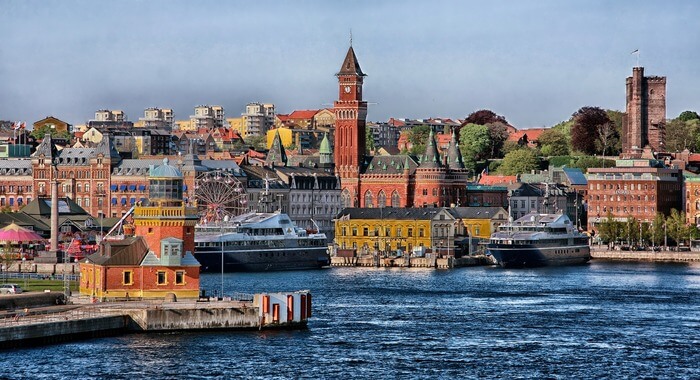
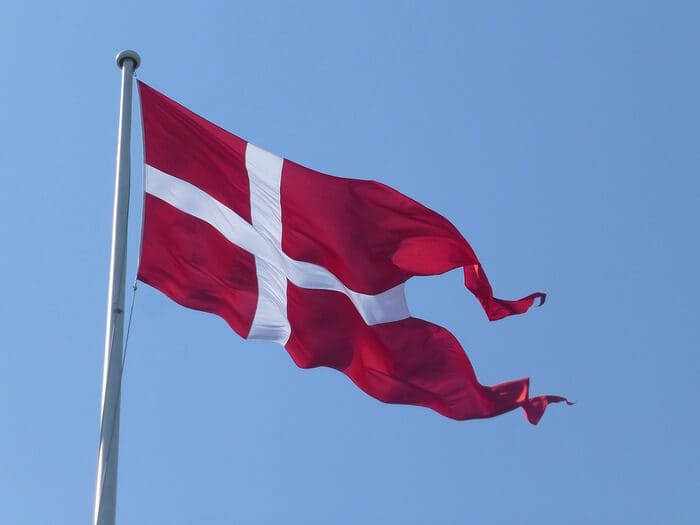
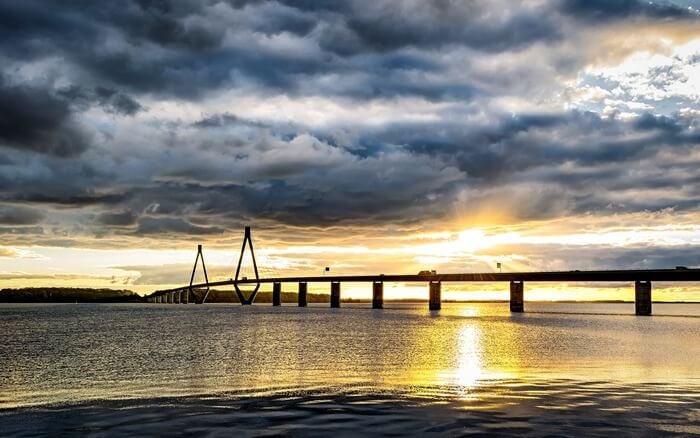
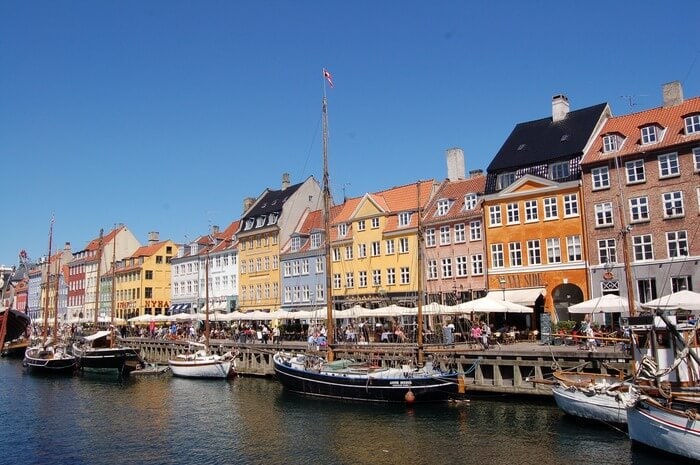
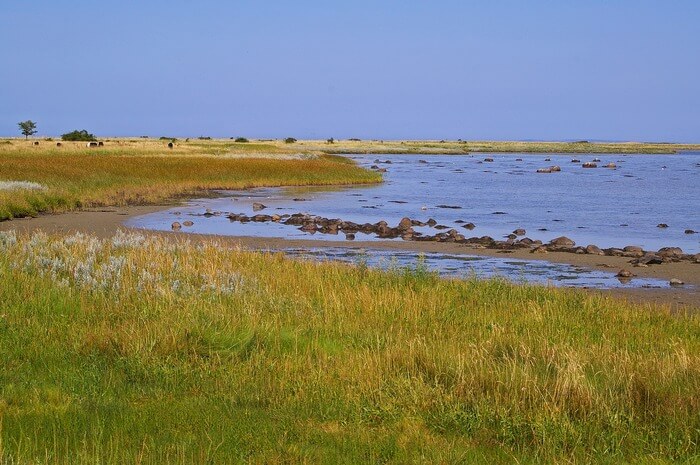
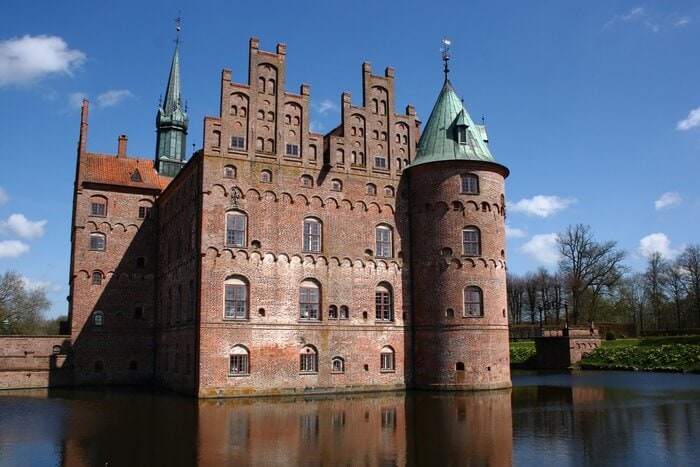
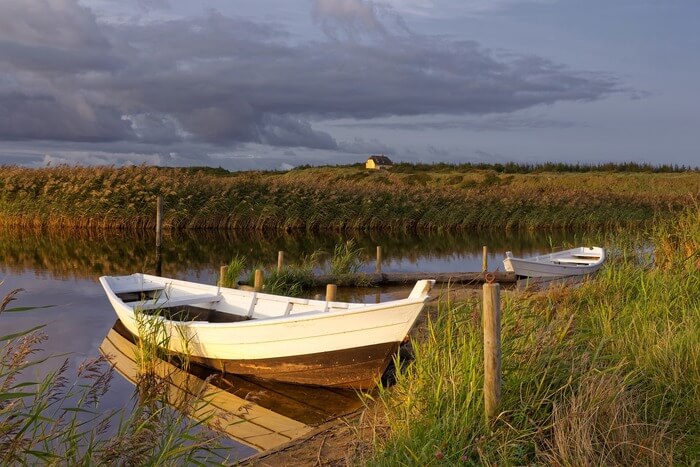
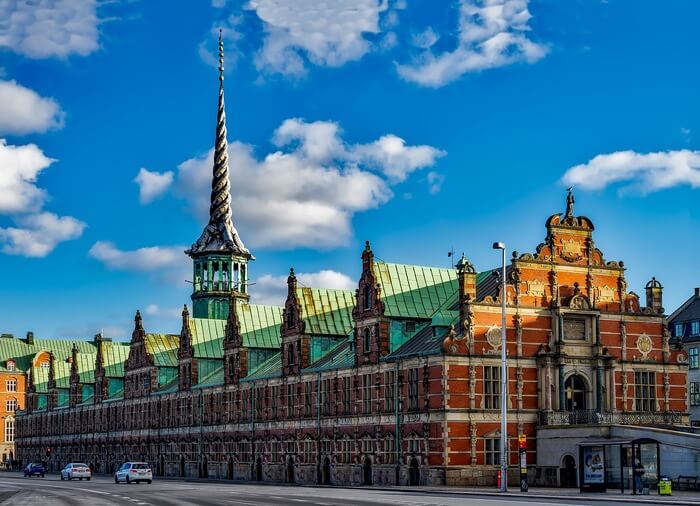
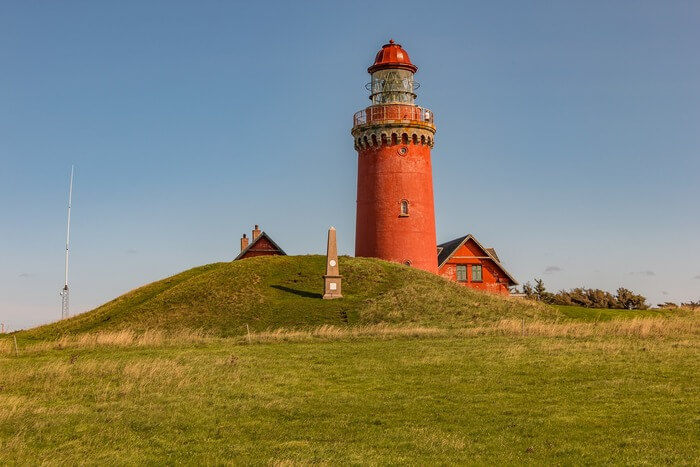
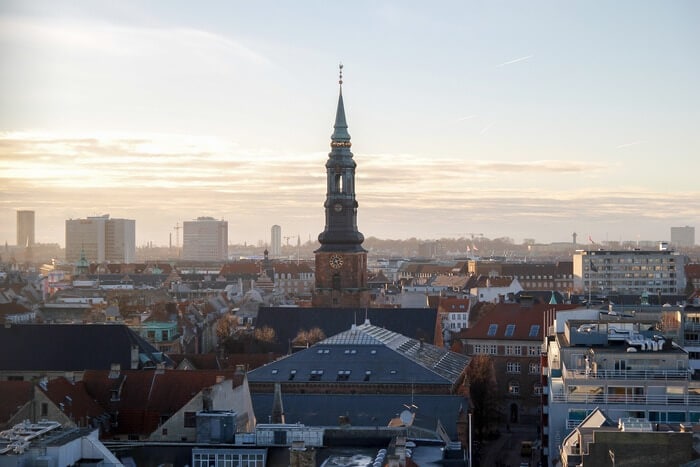
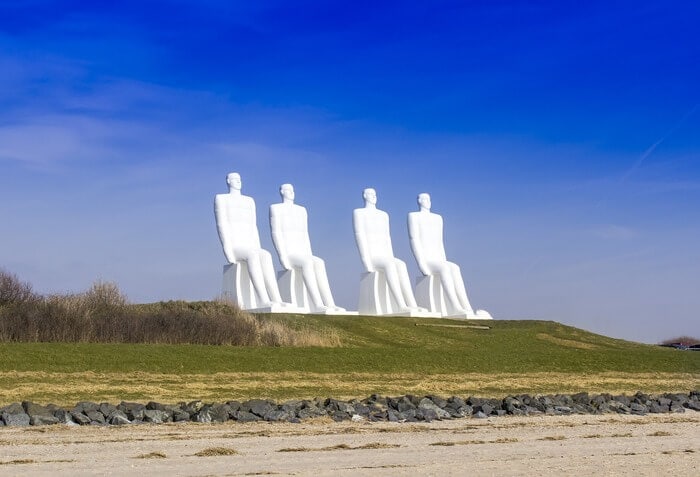
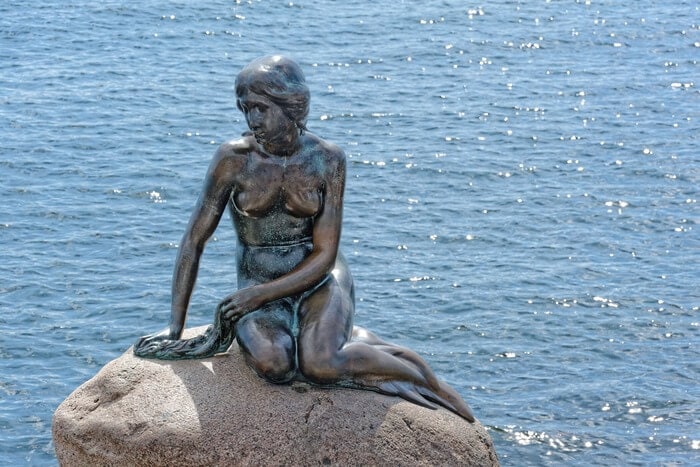
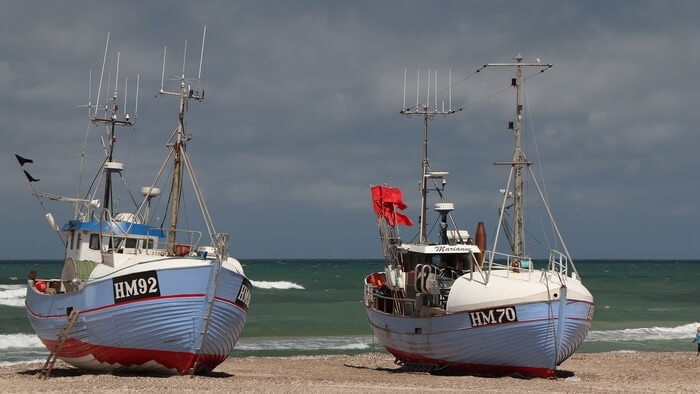
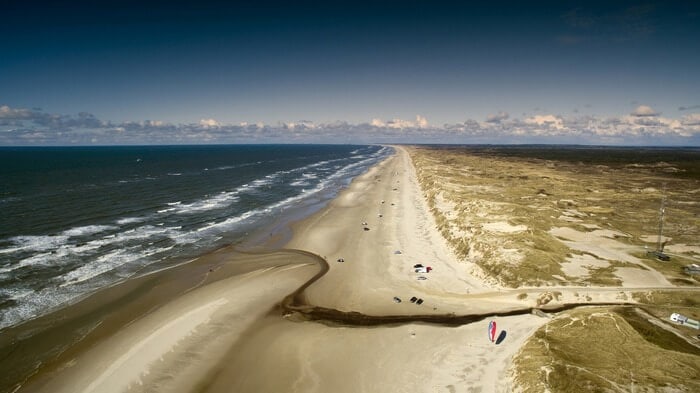
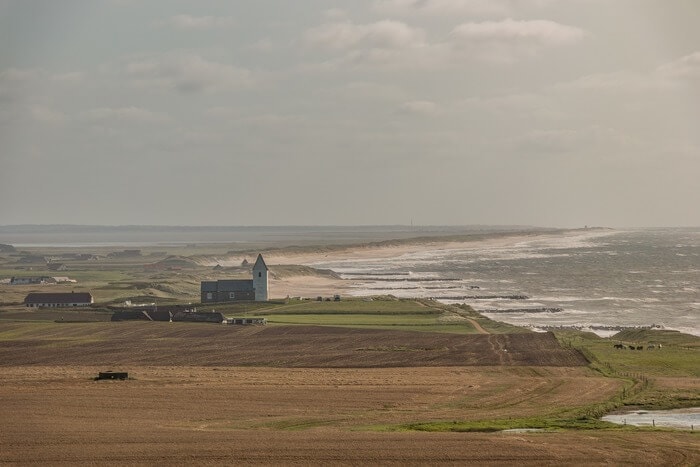
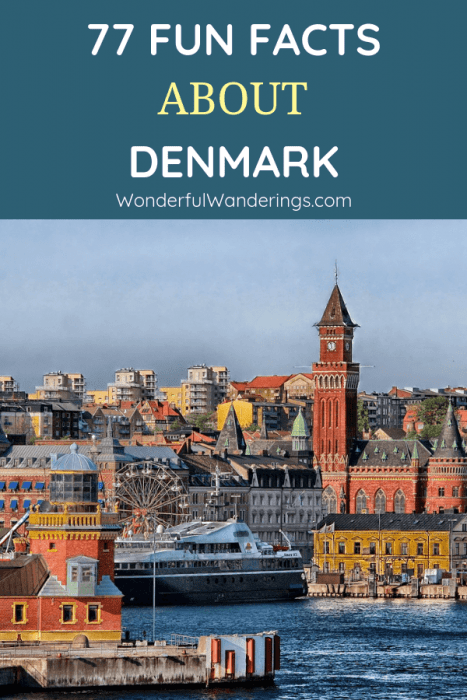

John Roche says
While 13 Nobel prizes for a country with a population of only 5.6 million is quite impressive, it does not give Denmark the highest per capita allotment of Nobel prizes of any country in the world. The Caribbean island country of St. Lucia, with a population of just under 180 thousand people can boast of having had two Nobel prize winners among its citizens.
Sofie says
Hah! Thanks for rectifying that :)
Mike says
This is a great site that my wife and I will use on our upcoming trip to Denmark.
You list Liberation Day as May 5, 1956. Shouldn’t it be 1945?
Sofie says
You are absolutely right! Typo :)
Thor says
There are no Danisj subtitles on on Danish movies and it would definitely not happen because of dialects! That’s just rubbish!
Sofie says
Hey Thor,
I’ve found mentions of this on several reputable sites, including the Washington Post. It’s also frequently mentioned on a whole range of websites as a great way to learn Danish. Obviously, I don’t live there, but perhaps there are both screenings with and without subtitles?
Johnna says
Denmark has bicycle lanes everywhere, I was there 4 years ago, and I was amazed of how many lanes there were just for the bicycle.
I enjoyed your post.
Thanks.
Johnna
Sofie says
Thanks!
Zlatka Mitkova Georgieva says
I visited Denmark for a week in 1996.
I was very impressed by the environmental awareness as well as the bycicles lines and wide use of bycicles as a transportation vehicles in everyday life.
Adorable Danish cuisine as well as the famous Danish butter cookies.
Interesting fact to use cinamon to remind those not married till age of 25 .Mentioning this joking treat here in the above article made me understand a present I had from English friends when I was older than 25.